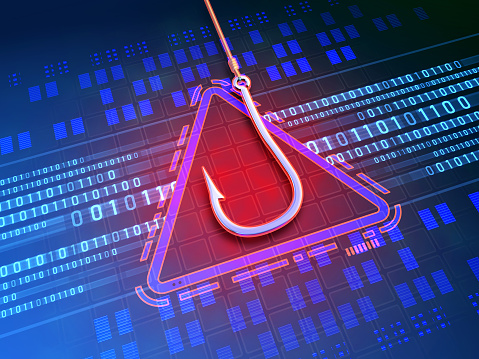What is a Security Breach

A security breach is the unintentional disclosure of information, often of sensitive data. Such information can be stolen, used, or viewed by unauthorized individuals. It can also be transmitted or copied.
Physical security breaches
There are a number of ways to mitigate physical security breaches. It’s important to consider your employees and the systems they work with.
A physical security breach could cost your company a lot of money. Hackers can steal your valuable hardware, and leave your business open to identity theft. This could mean losing your customers’ information and financial records.
The Ponemon Institute’s report on the most expensive data breach found that it took an average of 223 days for a corporation to identify and contain the attack. Using a cloud based system can help reduce that time.
You can also protect your company from a physical security incident by making sure that you have a robust access control system in place. These systems are designed to limit the entry of anyone into a specific area of the building.
Besides preventing physical security breaches, the best way to safeguard your business is to implement technology-driven industry standards. Physical and cybersecurity teams can collaborate to create a comprehensive strategy that works for both.
Other physical security measures include access control technologies, like electronic card entry systems and internal door locks. Not only do these prevent unwanted employees from getting access to sensitive areas, they also help keep your equipment safe.
If you have an employee ID system, make sure it is used properly. Passwords are another key aspect of any security plan. Having a password that is complicated but not impossible to crack can help protect you from thieves.
The most important physical security precaution is to never leave important workplace equipment out of sight. Whether you’re running a small shop or a large corporate entity, a theft or vandalism incident can take a toll on your business.
Social engineering attacks
Social engineering attacks are one of the biggest threats to cybersecurity. Attackers use the human element to gather information and to manipulate victims into compromising their digital and physical security.
The most important thing to remember is to stay vigilant. If you think you have been targeted, slow down and take the time to learn more about the tactics being used.
One way to protect yourself is to get the right tools and technology to thwart hackers. The Kaspersky Security Cloud is a great resource for monitoring data breaches.
Another tool is to build a positive security culture within your organization. This will help keep your staff safe. Ensure your employees are aware of the signs of an attack.
Among the most common social engineering schemes are email and text messages. Avoid clicking on links from unfamiliar sources. Also, ensure you lock your laptop when you are away from your workstation.
Some of the most sophisticated scams involve sending you something of value, such as a thumb drive containing destructive viruses. Using these schemes, attackers can steal sensitive financial and personal data.
A more simplistic approach involves emailing you with a link that takes you to a fraudulent website. You might be surprised by the content you find.
The most effective social engineering schemes are the ones that take advantage of your most natural and unguarded behaviors. For instance, if your email account has been compromised, you might receive an offer for free money or a product.
Educating yourself on the various tactics used in social engineering is the best defense. If you see a suspicious email, call a trusted family member or friend.
Social engineering is a nefarious and risky endeavor. But, if you know how to do it, you can protect your company and your digital security.
DDoS attacks
DDoS (distributed denial of service) attacks are used to cause degradation of services. In these cyberattacks, multiple malicious machines called botnets attack a target. These machines can include computers, Internet of Things devices, networked resources, and other devices.
DDoS attacks can be conducted by hackers or business adversaries. In the latter case, there is a possibility of financial loss. Cybercriminals and government entities can use DDoS attacks to shut down competitors’ websites. They may also launch cyber warfare against their enemies.
To conduct a DDoS attack, attackers may choose to use an army of zombie devices, known as botnets. These botnets can contain thousands of nodes or millions of nodes. Botnets are usually composed of compromised IoT devices. When attacked, the botnet can send different forms of malware to the victim.
Aside from compromising the victim’s web server, the botnet can also be used to send spam. The attackers are then able to steal user data and other information.
DDoS attacks are a common threat to business today. Some online software companies have gone offline after refusing to succumb to the threats. As such, businesses are advised to take preventive steps to protect themselves from these attacks.
There are two main types of attacks: the Layer 7 and multi-vector attacks. Both exploit vulnerabilities in the Layer 3 & 4 protocol stack.
Multi-vector DDoS attacks are more stealthy and require multiple mitigation strategies. This is due to the fact that the attackers are able to generate more attack traffic through more attack machines.
DDoS attacks can be prevented by deploying an intrusion prevention system in-house, buying services from an internet service provider, and using a content delivery network. It is essential to carry out a detailed traffic analysis to detect any DDoS attacks.
Loss of reputation
A cyber attack can have a big impact on the reputation of a company. Some customers will never return. Others will move to another provider. Companies spend a lot of money and time to manage the aftermath of a security breach. If the data is not backed up, it can be difficult to recover.
The global cyber threat environment is changing rapidly. It’s more critical than ever for organisations to build an effective cybersecurity strategy. Investing in effective learning, security awareness, and cyber resilience should be a priority for any organisation.
One way to minimise the risk of a cyberattack is to build a culture that encourages and encourages employee participation in security. This can involve security training and other exercises. Another approach is to invest in cybersecurity solutions that can plug holes in a network.
In the UK, a survey of 1000 businesses revealed that cyber breaches can have a significant impact on an organisation’s reputation. These measures include customer turnover rates, revenue, and share price.
Reputation losses can have a large impact on a company’s financial performance. Large companies can easily absorb the losses, but smaller enterprises may suffer more.
For a small business, losing a customer or two can have a negative effect on its reputation. If the company does not take steps to rebuild its reputation, some of these clients could be gone forever.
Cyber attacks are increasing in number and cost every year. The average cost of a data breach is around $4.4 million, but it doesn’t include the costs of ransomware.
Despite the increased concern over cyberattacks, many organisations have not taken the necessary steps to prepare for a potential attack. More knowledge on cyberattacks will help to reduce the chance of a security breach and damage to an organisation’s reputation.
Legal consequences
Security breaches can damage a company’s reputation and financial position. They also affect the company’s ability to compete. Customers may lose confidence in the company and feel uncomfortable doing business with it. This can lead to a reduction in customer business and sales revenue. The company can also incur costs to remediate the problem.
If a company is subject to a security breach, it needs to investigate the breach as soon as possible. If the investigation reveals that the security breach was caused by a crime, the company may be held liable.
Companies can prevent future breaches by changing the way they handle security. They can also upgrade their technology and implement new procedures. When a breach is discovered, companies can contact external counsel or computer forensic experts to help them evaluate the situation and determine the best course of action.
Notifying the affected individuals is important. Individuals have a right to be informed of the security breach. The law requires notice to be delivered in a reasonable time frame. However, if an attacker’s actions are deemed criminal, notice may be delayed.
Affected parties can sue for damages. Depending on the nature of the breach, they may have statutory or implied contractual claims against the company. In addition, they may have a claim against other parties who allowed the breach to occur.
Laws vary from jurisdiction to jurisdiction. Each jurisdiction has unique notification requirements. Ensure that your company is aware of the laws of all jurisdictions where it operates.
Companies are often held liable when employees mishandle confidential information. For example, a departing employee might steal trade secrets.
Alternatively, a third party might breach the security of the company’s system. Third-party vendors can also be held liable.




